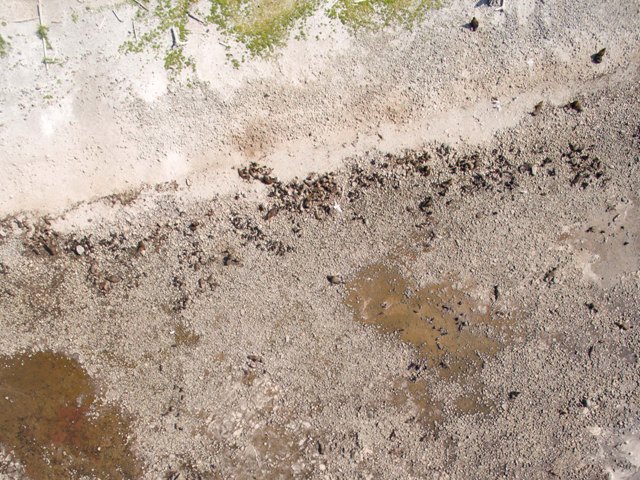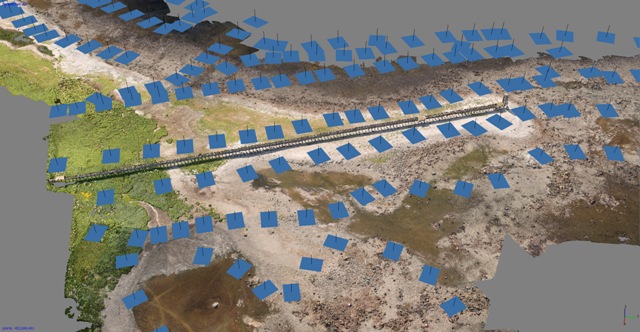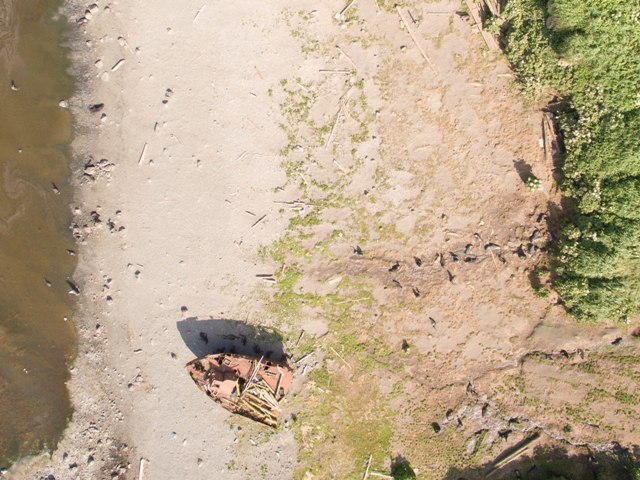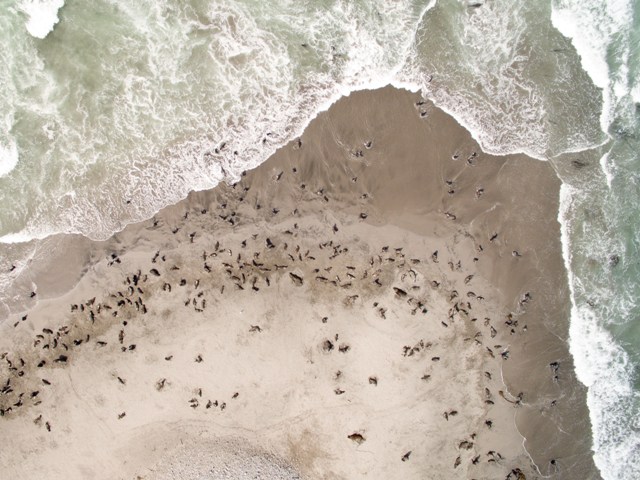To understand the dynamics in the population of the northern seal and other animals – if it decreases, stands still or increases – we need monitoring or simply counts. But it is essential to count right. Moreover, we should count not all animals, but only pups of the northern seal, which were born during the year of the monitoring.
The northern seal pup. Photo by Evgeny Mamaev
How we do it
There are several ways to monitor seals population on permanent rookeries: chasing method, based on monitoring paths, and estimation method, based on the number of females and tagged pups. Traditionally, the Commander Islands Nature and Biosphere Reserve used the chasing method together with estimation method, based on the number of females. But in summer, 2016 our researchers made an experiment – they used a drone with camera on it.

Reefs near the Severnoye rookery on Bering Island. Photo by Ivan Rybakov
The method is absolutely different from all others. Chasing method consist in chasing away all adult animals to count the pups. The main disadvantage of this method is stress for animals and injuries, which they get during leaving the rookery. It is the most destructive method for any rookery. On the other hand, estimation, based of females numbers, is not very accurate and numbers vary by 50%, because scientists should analyze the total number of females on the rookery and in the water, number of all four-years-old females, coefficient of pregnant females and other data, which are hard to use, as there are no mass tagging of the animals and no information about their age or pregnancy.
Researchers using chasing method. Photo by Alexey Chetvergov
Chasing method. Photo by Alexey Chetvergov
Monitoring paths are not dangerous for the rookery, but are sometimes impossible to use. On Severo-Zapadnoye rookery on Bering Island it is situated at a height of several tens of meters, which is convenient. On Severnoye rookery some parts of the monitoring path are on the same level with the rookery, which makes monitoring very difficult. The only place there favorable for monitoring is the old watchtower.
Trestlework and watchtower for monitoring on Severnoye rookery on Bering Island. Photo by Evgeny Mamaev
The difficulties seem immense, but drones (quadrotors, UAV) help to overcome them.
Promising is the key word
The researchers of the Commander Islands Nature and Biosphere Reserve made the first monitoring flights, using drones, during the summer of 2016. The drone flew over Severnoye and Severo-Zapadnoye rookeries at a height of 60 meters above the sea level, following its special rout. The animals had no idea, that a flying eye is watching them. That is why the drone didn’t frighten them and the scientists had a chance to estimate not only their numbers, but also distribution on the rookeries.

Coastal line on Severnoye rookery, Bering Island. Photo by Ivan Rybakov
The Commander Islands Nature and Biosphere Reserve mapmaker Ivan Rybakov merged the pictures, taken during the flight, and made a full map of the place using Russian software Agisoft PhotoScan. Today we have a plan of Severo-Zapadnoye rookery, on which we can see more that 8 500 pups of the northern seal.

Scheme of photo spots on Severnoye rookery, Bering Island
In fact, reconciliation of data, collected by the drone and those collected with other methods showed that air monitoring has a number of specific disadvantages. For example, it is nearly impossible to identify dead animals, as they are usually situated under other animals or in the send. Even if they can be seen, it is very hard to understand if the animal is alive or dead. During air monitoring in 2016 on Severo-Zapadnoye rookery we found up to 1 500 dead pups.

Seals near a cool stream on Severnoye rookery, Bering Island. Photo by Ivan Rybakov
Moreover, weather sometimes complicates the work as not every day is suitable for air monitoring – some days are too rainy, windy or not sunny enough.

Seals hiding in the shade of a broken ship on Severnoye rookery, Bering Island. Photo by Ivan Rybakov
There are also some unfavorable technical conditions. Drones usually have relatively low resolution and not wide enough dynamic range of cameras and low – up to half an hour – battery performance. We believe that these weak-points will be overcome and that a photo collection of the rookeries will propel the monitoring of northern seals to the next level.










